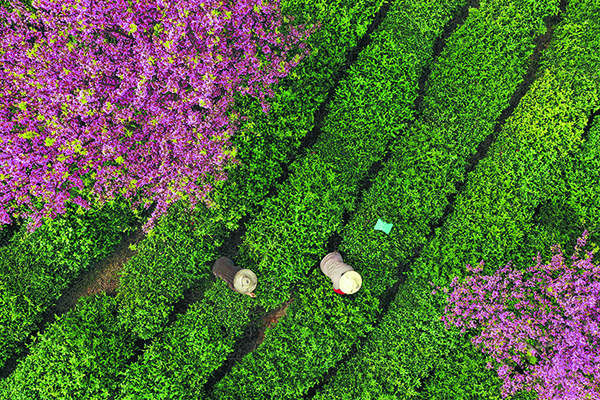
A tea plantation in Huangshan, Anhui province. [Photo by Shi Yalei/For China Daily]
About 800 meters above sea level and next to the picturesque Taiping Lake, Houkeng village in Huangshan, a region in the south of Anhui province, seems to be blessed by nature and an ideal place to create an aromatic brew in typical Chinese style.
It is home for the handmade tea variety Taiping Kowkui (also spelt in pinyin as houkui). Every spring, when foggy days moisten the emerald hillsides, villagers know their harvest will come.
When Fang Jifan first followed his father to climb and pick the tea leaves in spring, he was only 6.
Now, 67, the fifth-generation tea farmer can proudly recall his life.
"Without any of three key factors — proper location, plant variety, or processing technique — the perfect Kowkui will not be born," he says. "It's a signature of our home."
Kowkui's exceptionally large leaves make many first-time viewers also mistake the tea as "vegetable", but this "king" of green tea in Fang's eyes beats other varieties on more than just size.
"Its aroma and flavor also stand out, thanks to the time-consuming work to process them," Fang says.
"It's a skill every child in our village will have to learn," he says. "There're about 500 families in the village, and each one makes tea."
As a leading tea processing practitioner in Houkeng village, Fang is now the national-level inheritor of intangible cultural heritage for Kowkui green tea processing technique.
Starting from a process known as shaqing (enzyme inactivation), a series of core skills, including fermentation and scenting, that need years of practice, help turn the fresh leaves into the ingredients of a refreshing drink.
Iron pots, and the right temperature, timing, and strength are all core to the success. People like Fang deftly fry the fresh tea leaves with bare hands. To ensure top quality, people have to make sure no leaf rolls when being heated.
After being created in the late Qing Dynasty (1644-1911), its high quality and relative rarity ensured Kowkui tea would be consumed as gifts among nobles. Even today, Kowkui enjoys a high market status.
In 2021, the average price of Kowkui was nearly 500 yuan ($71.7) per kilogram, and its processing techniques were still done by hand.
According to Fang, the popularity of tea has also played a key role in rural vitalization as Houkeng residents can earn 30,000 yuan a year growing and processing Kowkui, and some can make up to 300,000 yuan.
"But we still need to embrace change," Fang says. "We cannot only aim at the high-end market. Only when Kowkui is more widely accepted and recognized by more consumers, can its life be prolonged.
"New technologies and modern machines can be introduced to increase our yield of second-tier products and thus expand influence," Fang says, sharing his next-step plan. "But core hand skills have to be retained to make the top-quality tea."
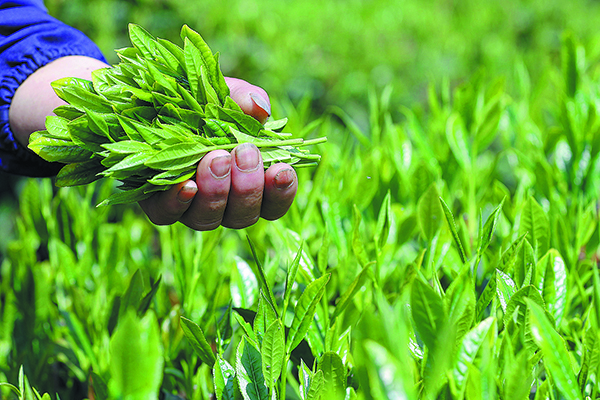
Taiping Kowkui is known for its large leaves and refreshing aroma. [Photo by Shi Yalei/For China Daily]
Rich tradition
In November, traditional tea processing techniques and associated social practices in China were inscribed onto the UNESCO Representative List of the Intangible Cultural Heritage of Humanity. The processing techniques of three tea varieties in the Huangshan region, including Kowkui, were added to the list.
Huangshan region, historically known as Huizhou, has been a hub for tea production for centuries. Historical documentation showed tea cultivation began here about 1,800 years ago.
In The Classic of Tea, a Tang Dynasty (618-907) milestone treatise with vivid descriptions on the benefits of tea to body and mind, the popularity of the drink produced in the region was also particularly highlighted.
"The tea culture not only reflects a refined taste in life, it also shows the beauty of craftsmanship and people's creativity," says Zheng Yi, deputy head of Anhui Tea Culture Research Society. "For centuries, the aroma of tea leaves has offered nutrition to this land. This intangible cultural heritage of tea processing techniques is deeply rooted in people's everyday life."
Fang, who is now also the head of the village committee, understands the exceptional status of tea in local culture. It is far more than just a drink.
"For Huizhou people, tea is an emotional bond to connect people," he says. "When you meet relatives and friends or hold key ceremonies or weddings, tea is the best gift. When neighbors have conflicts, drinking tea together is a good way to make a truce and shake hands again.
"People will first exchange their praise for a good cup of tea before talking about business and other key issues," Fang adds. "Sharing love for certain types of tea may reveal shared values toward life. So, in our culture, tea is related to social etiquette.
"And, even judged from a modern scientific point of view, it is a much healthier way to socialize through tea than alcohol," he giggles.
In a region where trade once brought huge prosperity, tea has an even stronger meaning. In Ming (1368-1644) and Qing dynasties, merchants from southern Anhui province used to play a key role on China's economic stage. Together with salt trade and financing, tea also became a pillar product.
In 1984, when the legendary 18th-century Swedish shipwreck Gotheborg was recovered from underwater, most of the 370 metric tons of Chinese tea sealed in its deck was found to be produced in present-day Huangshan.
"Tea is like an ambassador to spread the culture of ancient Huizhou to the rest of world," Wang Chang, another national-level ICH inheritor and a tea processing master from Qimen county, Huangshan, says. "It demonstrates the history of the giant trade network and entrepreneurship of people here."
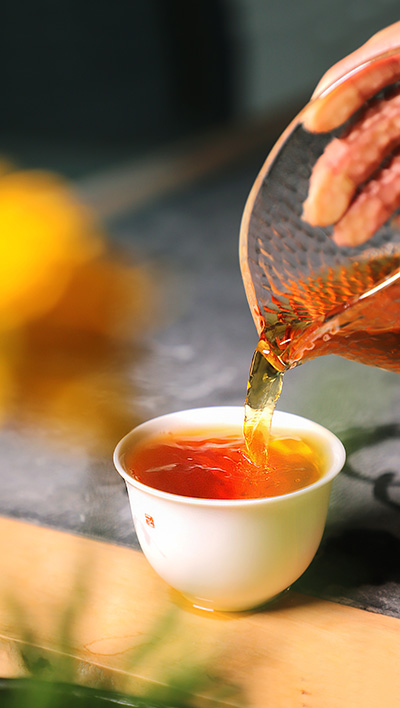
Keemun, a famous black tea variety produced in Huangshan, Anhui province.[Photo provided to China Daily]
A royal favorite
It is said that Keemun (the old spelling of Qimen) is among the favorite black tea varieties of the British royal family. Compared with Kowkui, it also enjoyed bigger fame overseas. However, its birth on a land most famous for green tea is a fascinating tale.
Wang Chang, 66, is also a fifth-generation tea processing practitioner. First learning how to make tea in junior high school, he grew up hearing legends surrounding the early days of that black tea icon.
According to him, green tea used to dominate Qimen as well, but locals found it difficult to capture market share in fierce competition with neighboring counties.
Qimen used to produce kaolin soil to supply the nearby Jingdezhen in Jiangxi province, a major porcelain-making and export center. Some merchants in the 1870s found black tea might be more popular among overseas clients. They introduced the full fermentation technique in Qimen and made use of the porcelain trade network to promote the "new" brand.
They succeeded, creating an unconventional black tea variety famous for its mixed aroma.
Located on the Qing Dynasty trade route, some buildings in Wang's junior high school were said to be an exchange post during this boom. In their spare time, making tea became a tradition for teachers and students there. It was even called "the tea leaf high school".
"I don't have to really 'learn' the skills," Wang recalls, laughing. "It naturally became part of me. And, I did better when making tea than staying in classroom, and that became my lifetime career."
Unlike most traditional Chinese tea varieties, which prefer original, pure flavor, Keemun mixes various floral and fruit tastes, as well as wooden notes.
"A key in processing the tea is to recombine the best tea buds produced from different gardens across the county and fully evoke their aroma, like making a perfume," Wang says. "That's why its fragrance can travel afar and keep hooking people."
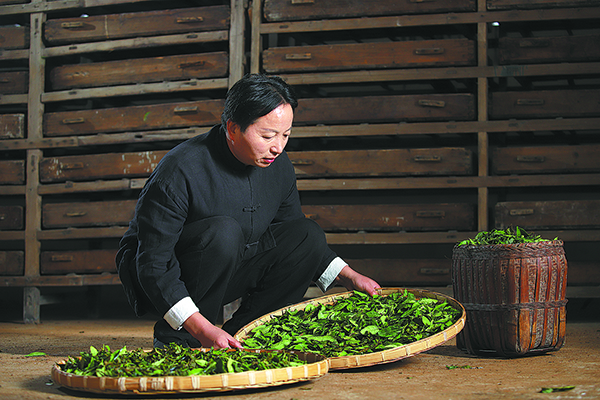
Wang Chang, a national-level inheritor of intangible cultural heritage, processes Keemun black tea. [Photo provided to China Daily]
Eyeing the future
To pass down tea processing techniques to more people, in the past five years, Wang has recruited 17 apprentices. Some of them were not those farmers who have grown up on the tea-cultivating land, but young graduates who wanted to revive the tradition. He has an open mind toward teaching his formula for success to more people.
"But the younger-generation tea producers still need to learn how to grow and cultivate tea plants in the first place," he explains. "They can only understand the soul of tea by working on the soil."
According to Wang Chenyang, the director in charge of intangible cultural heritage at the Ministry of Culture and Tourism, other than clan-based and master-apprentice transmission, knowledge and techniques related to tea, particularly some specific skills and know-how, are also handed down in China through various forms, like schools and communities, and the tea producers in Huangshan have set a good example.
"The inscription of the element (on the UNESCO list) would further inspire communities, groups and individuals concerned to safeguard intangible cultural heritage more consciously and with a stronger sense of responsibility," he says. "It can foster sharing of knowledge and experience on craftsmanship, healthcare practices and food security."
For both Fang and Wang Chang, bringing tea-related courses to elementary and high schools is a crucial part of their daily work.
"Children can better understand the culture they belong to," Fang says. "Only when they love drinking tea, our traditional technique can survive and thrive in the future."
Tea competitions are annually held in Huangshan. Fang also highlights the importance of mixing traditional processing techniques with modern design, and better promotion of tea-related ceremonies among the public.
Wang Chang has already drafted a new blueprint.
"The COVID-19 pandemic has waned and we're back to the normal track of connection," he says. "I cannot wait to travel abroad, promoting Keemun to the rest of the world again, like our ancestors did."
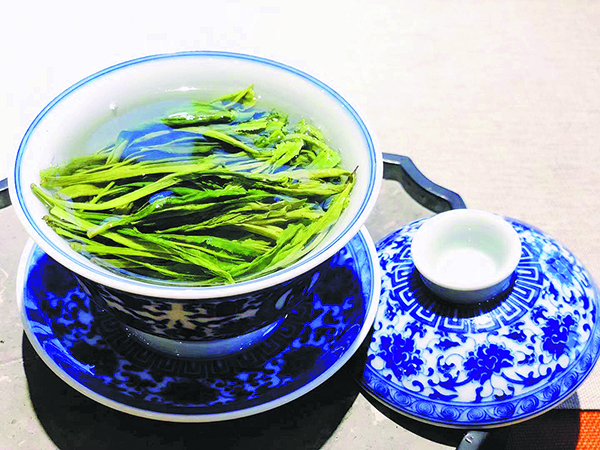
Taiping Kowkui, produced in Huangshan, is a highly recognized green tea variety in China. [Photo provided to China Daily]
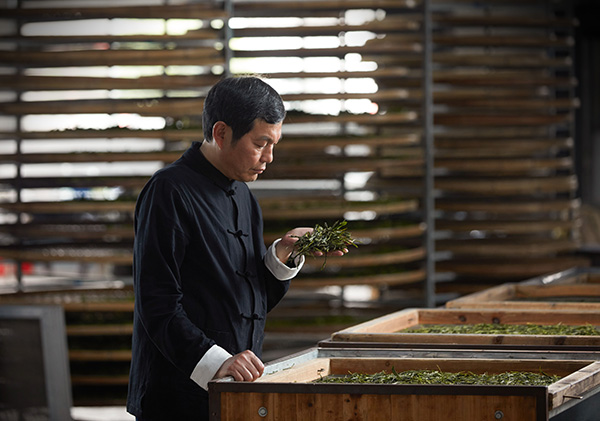
Fang Jifan, a national-level inheritor of intangible cultural heritage, during processing of Taiping Kowkui. [Photo provided to China Daily]

